Greece is a generous wine country. It’s much more than just the sunshine and soil that make it ideal for grapes though. It’s the variety of microclimates, and diverse regions that provide the ideal growing conditions for specific grapes of individual character. Greece has vineyards cooled by the sea air, vineyards at high altitudes, vineyards whole vines are nourished in volcanic soil.
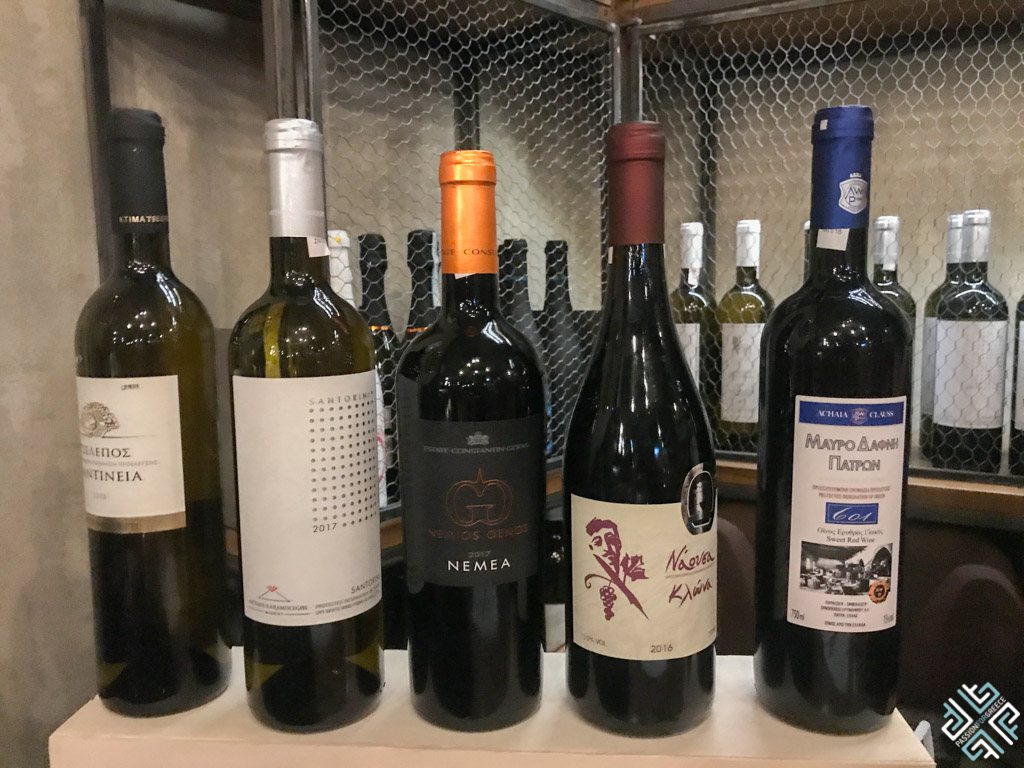
Greece has also something else that makes it a fascinating destination for the oenophile – many indigenous grape varieties. These express their regions with unique character. In some cases, they even connect us with the past. Here are some interesting Greek red wine grapes to add to your wine vocabulary, and your cabinet.
Agiorgitiko
In the name of this grape, we see the name “Saint George” (“Agios” – saint). This name likely came originally from a chapel in the heartland of the Agiorgitiko grape – Nemea, in the Peloponnese. This grape originated in the Peloponnese, and it’s thought to be one of Greece’s oldest grape varieties. It thrives in the heat, and at altitudes it develops a more nuanced flavor profile, with acidity for balance. Agiorgitiko produces full-bodied and lush wines redolent of red fruits.
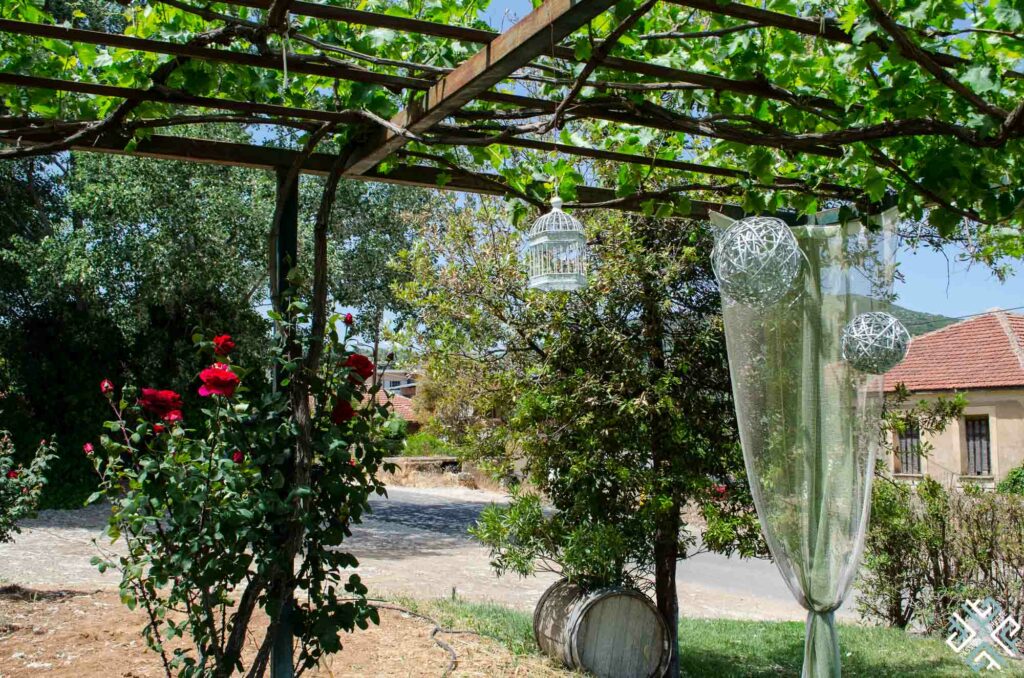
This is one of the most widely cultivated grapes of Greece.
Kotsifali
A rarer grape by far than Agiorgitiko, Kotsifali grows almost exclusively on Crete, specifically in the Heraklion regional unit. It is also grown a little in the Cycladic islands. The indigenous grapes of Crete are suited to a wild terrain and slopes. Kotsifali grape does well at altitudes, and produces a bold wine worthy of its heritage. It has full red fruit flavors and an element of spice, smooth tannins, and a gentle acidity.
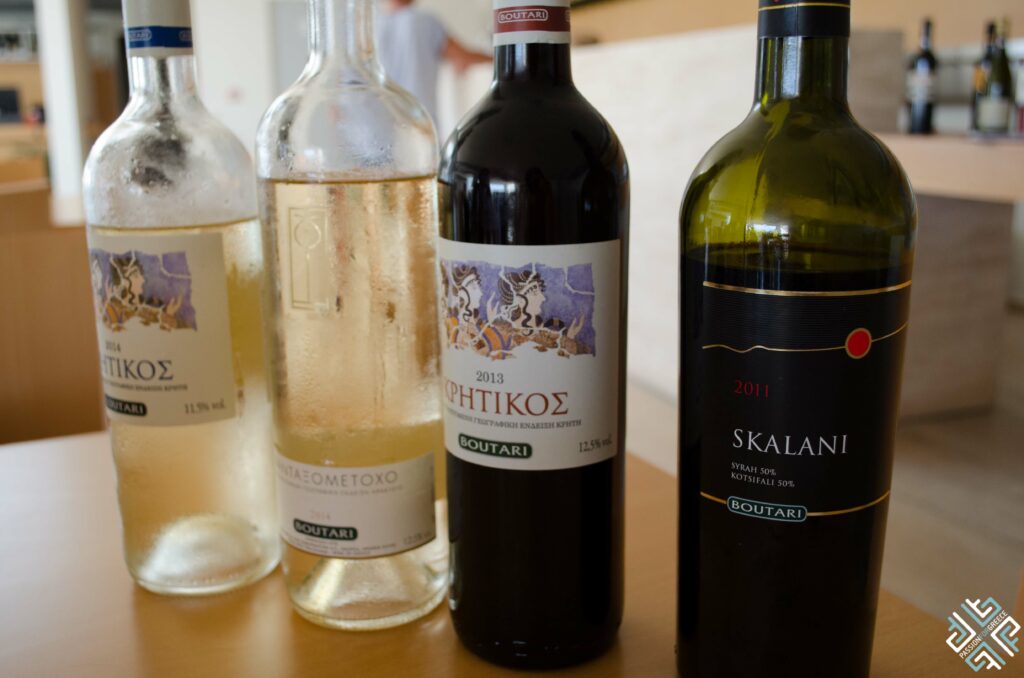
Liatiko
This is another Cretan grape, and shares some characteristics with Kotsifali. Liatiko also has sweet notes of spice, soft tannins, and a mild acidity. The grape makes a full-flavored wine with a lot of body and a high alcohol content. It ages well.
Liatiko also has a sweet side – it produces dessert wines with dried fruit flavors from the sun-dried grapes.
Limnio
Just as one might guess from the name, the Limnio grape is from the island of Limnos.
This is an indigenous grape with a serious historic pedigree. This is widely thought to be the wine Aristotle referred to when he spoke of the Lemnia wine of the island of Limnos – a famed wine. Homer and Hessiod also referred to the excellent wine of Limnos.
A Limnio varietal will be full-bodied, and characterized by moderate tannins and acidity as well as a mineral quality. Today, the island of Limnos is much better known for its PDO Muscat of Alexandria. The Limnio grape, meanwhile, is also grown elsewhere, notably Drama and the Mt. Athos area of Halkidiki.
Medium in tannins and acidity, Limnio wines have a fresh, herbal quality, and a flavor of red fruits. It is often described as an elegant wine, and a lighter red wine in body.
Mantilaria
An island grape grown widely on Rhodes but also on Crete and other islands, Mandilaria looks bold, but isn’t necessarily. This dark-skinned grape produces a very deep red wine, but with moderate alcohol content. High in tannins, Mandilaria is often used in blends. Liatiko and Kotsifali – both softer and rounder, are compatible grapes with Mandilaria.
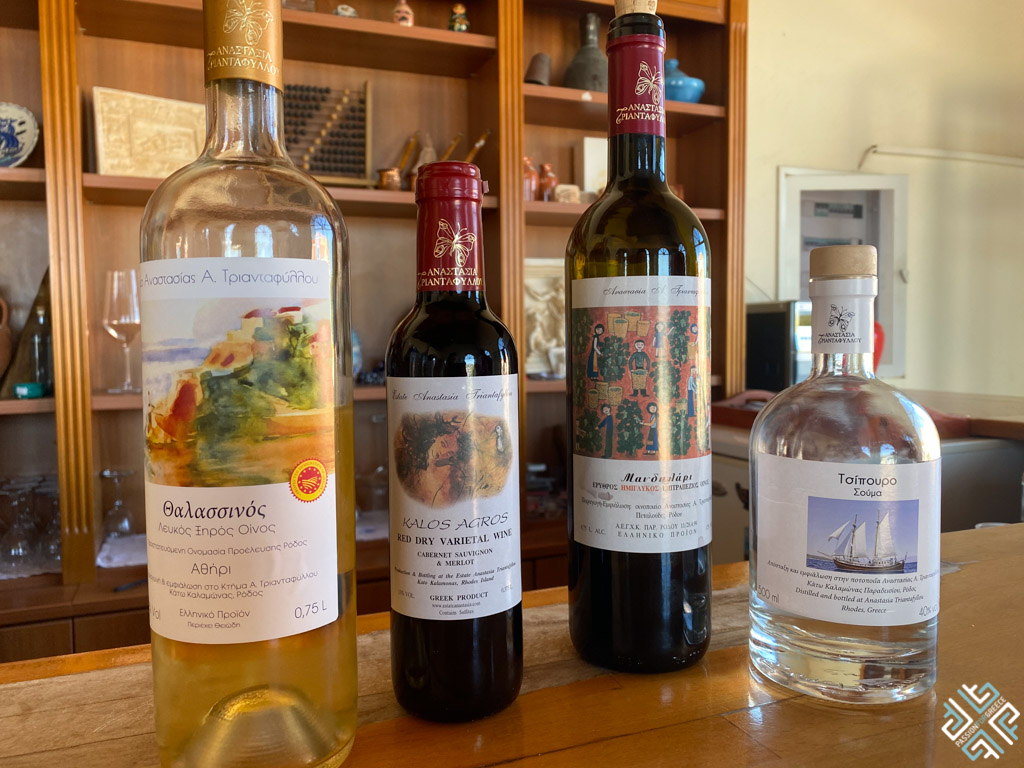
Madilaria is the sole component of the PDO red varietal of Rhodes.
Mavrodafni
Mavrodafni also has an evocative name – “Mavro” is black, and “dafni” is laurel, so one would expect a wine of deep color and sensuous fragrance. That’s partially correct – Mavrodafni grapes were historically used to produce a famous fortified sweet wine of intensely deep color. It’s produced using a method similar to sherry – the solera method, in which the new wines are blended with the old to take on some of their character. Mavrodafni has deep flavors, such as chocolate, raisins, caramel, and dried fruits. Achaia Clauss was the first producer of this wine and the grape is largely associated with that label.
Now the Mavrodafni grape is also vinified to produce dry wines of interesting character. Full-bodied, exceptionally dark, and quite spicy with lingering notes, this is an interesting grape.
Mavrodafni is grown in the Peloponnese, near Patra.
Negoska
This Greek grape does not have a particularly Greek-sounding name. It is, and it isn’t – the name is the Slavic word for “Naoussa.” However, Negoska is not grown around Naoussa today but is rather more concentrated around Goumenissa. Here, the Negoska grape is in Goumenissa’s PDO red, blended with Xinomavro. When vinted on its on Negoska produces a rich, fruity wine with soft tannins and soft acidity.
Xinomavro
“Black-sour” is the literal translation of the name of this indigenous and popular greek grape. The star of Northern Greece’s PDO Naoussa, PDO Goumenissa (with Negoska), PDO Amyntaio, and PDO Rapsani, Xinomavro requires some finesse. It needs just the right conditions to thrive, and tender care. And all this work and worry is for relatively low yields. The rewards are in the bottle, and also not right away. With relatively high tannins and acidity, they are usually aged at least two years before being sold, and they can age much longer. The flavor bouquet is complex, including not just red fruits and flours, but notes of tomato, tobacco, olives, nuts, and prune.
Rosé Wines
Greek rosé wines are gaining in popularity. They are often characterized by soft hues, soft tannins, and gentle minerality, with an appealing freshness. Many Greek rosé wines are vinted from the indigenous grapes mentioned here above, sometimes in combination with international grape varieties.
Sideritis – a Rosy Grape for Rosé
This is among the rarest of Greek grapes, growing only in the Peloponnese, most particularly around Achaia, and a little in Attica and on Evia. The name again reveals something of the grape. In this case, the Greek word for iron is “sidero” – which in this case refers to the toughness of the grape’s skins. Sideritis, in addition to whites, is used for rose wines, with a flavor profile that includes floral note, citrus, spiciness, and some minerality.
Sideritis grapes are beautiful on the vine, glowing salmon and rose.
Some Greek Rosé Wines to Try:
La Tour Melas Idylle d’Achinos 2019
This fragrant, Provencal-style rosé is made with a blend of Syrah, Grenache Rouge, and Agiorgitiko grapes. This cool and refreshing wine with balanced acidity has a beautifully bright hue, suggesting the notes of rose with which it greets you.
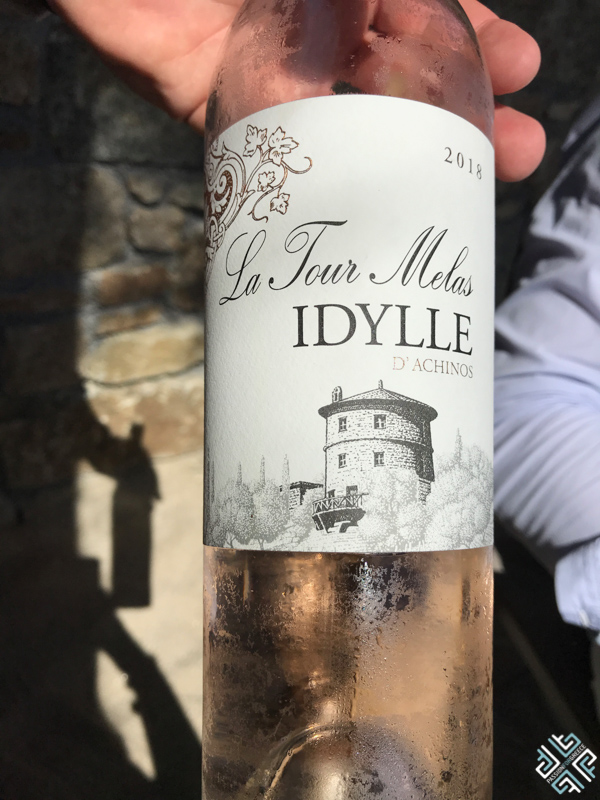
La Tour Melas Nautilus Drink Pink 2019
In Greek, there’s an expression “onoma kai pragma” – it means the name and the thing are one. With La Tour Melas’ Nautilus Drink Pink, you are in fact “drinking pink” – the nose has red fruits, red apple, cherries, and rose. On the plate you taste pomegranate, blood oranges, and pink grapefruit. As with the Idylle d’Achinos, this is a blend of Syrah, Grenache Rouge, and Agiorgitiko. It’s an excellent value.
Parparousi Petit Fleur 2019
In this delightfully nuanced rosé, the Sideritis grape shows its complexity. Petit Fleur fruit notes – cherry jam and pear – mingle beautifully with notes of tea. Smooth and balanced, it has a pleasant acidity and a fragrant finish of fruits.
Harlafitis Estate Saumon
Blending fragrant florals and mineral notes, this salmon-hued beauty is beautifully balanced and fresh. Its fullness unfolds, with a pleasing aftertaste. Although this lovely Peloponnesian rosé is not made with an indigenous Greek grape (Cabernet Sauvignon), it has a Protected Geographic Indication.



